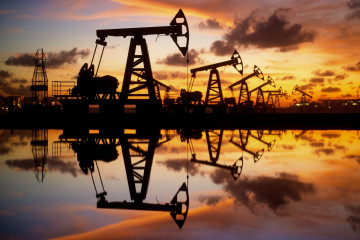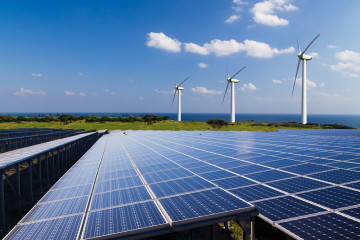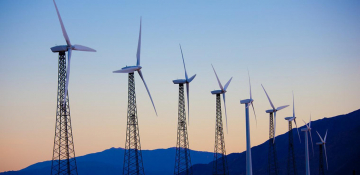St. Paul, Minnesota, August 17, 2022: Global energy end-use continues to be highly dependent on fossil fuels, and the United States is no exception. As of 2020, about 79% of primary energy end-use and 60% of electricity generation came from fossil fuels, including petroleum, natural gas, and coal. In order to keep up with rapid innovation, stakeholder demand for the transition to clean energy, and the urgent need to combat global climate change, the energy sector must transition significantly.
In February of this year, the United States published and committed to the “Strategy to Secure the Clean Energy Transition.” This strategy centers around goals to reduce net greenhouse gas (GHG) emissions 50-52% below 2005 levels by 2030, create a carbon pollution-free power sector by 2035, and achieve net zero emissions economy-wide by no later than 2050. Key to achieving these goals is investing and building a secure and resilient domestic supply chain for the energy transition.
As part of global efforts to address climate change impacts, the U.S. Government’s Department of Energy (DOE) published this report to address the multitude of challenges and opportunities facing the energy supply chain, summarize recommendations for congressional action, and dive into key strategies to secure America’s position as a clean energy leader. The DOE believes the US can expand global market share with these policy-supported and investment-focused technologies:
- Fuel Cells and Electrolyzers - The United States is resource-rich and may be able to export electrolytic hydrogen, related chemicals, electrolyzers, fuel cells, and related equipment. The US will invest $1.5 billion for clean hydrogen manufacturing and recycling and electrolysis RD&D and $8 billion for clean hydrogen hubs to support the production, processing, delivery, storage, and end-use of clean hydrogen.
- Grid-Scale Energy Storage - Next-generation technologies are an opportunity for U.S. investment in areas that include sodium-ion batteries, metal-air batteries, and other long-duration technologies like hydrogen and innovative approaches to mature technologies such as PSH and compressed-air energy storage.
- Wide Bandgap Semiconductors- The United States has previously led the world in semiconductor technology development. Right now, bandgap semiconductors—used primarily in power electronics—comprise less than 0.1 percent of the global market today, but their impact and market size are growing rapidly.
- Nuclear Energy Technology Leadership - The United States has the largest commercial nuclear power fleet in the world, which generates the largest source of carbon-free electricity in the country and supports approximately half a million jobs. The US will invest about $2.5 billion in advanced nuclear, but more will be needed for nuclear energy to reach its full potential in meeting U.S. climate goals.
- Hydrogen and Captured CO2- Incorporating electrolysis, fuel cell, and CO2 capture facilities into the expanding infrastructure network involves the conversion or redevelopment of interconnection facilities, power stations, brownfields, and land or other assets associated with natural gas and electricity transmission and distribution. Blending hydrogen with natural gas or even conversion of natural gas pipelines to hydrogen may prove feasible under certain conditions. This transition process has technical challenges, is costly, and will require government incentives and regulatory support.
- Semiconductors: As electrification and automation increase, the use of both wide bandgap and conventional semiconductors will continue to increase dramatically. DOE is developing an R&D roadmap to aggressively tackle energy efficiency with a goal of doubling semiconductor energy efficiency every two years or less until semiconductor energy efficiency is 1,000 times greater than it is today.
How Is the US Strategizing to Secure the Supply Chain?
Strategy 1: Increase Domestic Raw Materials Availability:
The U.S. Government is actively pursuing a suite of activities to bolster raw material availability. Some of these efforts include:
- $30 million to help secure the domestic supply chain of critical materials that build clean energy technologies through 13 national lab and university-led research projects.
- The Small Business Administration (SBA) and DOE will leverage existing efforts such as the Critical Minerals Institute, the Minerals Sustainability program, Federal Consortium for Advanced Batteries, and more.
- Approximately $6 billion designated for processing, manufacturing, and recycling of battery materials
- $140 million allocated to demonstrate commercial viability of a full-scale integrated rare earth element facility for extraction, separation, and refining.
Strategy 2: Expand Domestic Manufacturing Capabilities
The United States is actively implementing policies and programs to support manufacturing for clean energy technologies. Some of these, such as tax credits and RD&D investment in manufacturing innovation, are aimed at creating important market signals.
Establishment of regional clean energy manufacturing clusters will be accompanied by analysis and increasing awareness of available special incentives and programs, identification of geographic locations of industrial brownfield sites available for redevelopment, and research on the local benefits and workforce opportunities created by a cluster.
The regional clusters will not only help create quality jobs, attract talent, and drive innovation, but will also help reduce logistical and supply chain issues associated with manufacturing key technologies.
Strategy 3: Invest and Support Formation of Diverse and Reliable Foreign Supply Chains to Meet Global Climate Ambitions
The global market for clean technologies—if we are to meet global climate goals—is simply much larger than the United States can fulfill alone. So, new actions will include leveraging the Build Back Better World (B3W) initiative launched in 2021 by G7 countries to support projects that simultaneously advance energy supply chain resiliency and B3W’s principles for quality and sustainable infrastructure.
Strategy 4: Create Clear Market Signal to Increase the Adoption and Deployment of Clean Energy
There is a lack of current demand in mature technologies such as hydropower, offshore wind, nuclear reactors, and electric grid technologies (transformers), as well as more acutely in emerging technologies such as fuel cells, electrolyzers, and carbon capture. Policy demand drivers will be key to this initiative.
Strategy 5: Improve End of Life Energy-related Waste Management
The U.S. does not yet have strong product responsibility requirements to recover valuable materials from consumer and other distributed products. DOE will leverage funding authority provided by the Bipartisan Infrastructure Law (BIL) to support end-of-life waste management with purchasing power, demand to support supply chains of recycled content products, market development, and sustainable sourcing practices.
Examples of end-of-life management concerns include cadmium in thin-film solar PV, disposition options used for nuclear fuel, safely decommissioning mining and manufacturing facilities, and health impacts on nearby communities.
Strategy 6: Attract and Support a Skilled US Workforce for Clean Energy
Cultivating and maintaining U.S. jobs for critical parts of the energy sector is a priority. The DOE will do the following to attract and support skilled US workers:
- Use Federal and State policy and procurement levers to support unionized, family-sustaining employment in the manufacturing sector.
- Work on strengthening the manufacturing workforce by requiring or incentivizing job creation and job quality commitments by manufacturing firms working on projects funded with public dollars.
- Engage in outreach to communities that identify effective methods to retrain displaced workers who are interested in transitioning to new clean energy careers.
- Support unionization across technologies to facilitate the ability of workers to switch jobs without losing union benefits or taking wage or benefit cuts.
Examples of workforce concerns in the electric grid supply chain include matching people with the right skills for large transformer manufacturing, which is detailed and labor intensive. For hydropower and nuclear technologies, workforce concerns include finding enough early career workers to take the place of retiring workers. Finally, for information technology (IT), it is difficult to find sufficient domestic developers for specialized energy systems software.
Strategy 7: Augment Supply Chain Knowledge and Decision-Making
The DOE will establish a new Manufacturing and Energy Supply Chain Office to help strengthen and secure strategic supply chains needed for the energy sector.
Finally, the DOE will leverage existing DOE authorities such as those provided by the Energy Policy Act of 2005 and the Energy Act of 2020 to create a database as well as leverage a study on a proposed National Supply Chain Database per the National Defense Authorization Act of 2021.
Why it Matters
In summary, by committing to the “Strategy to Secure the Clean Energy Transition,” the United States shows that it’s ready to tackle the energy sector transition. Though a lot of work lies ahead and there are many obstacles to clear, the DOE believes this strategy can help lead the US toward becoming one of the leaders in clean energy.
Want more news and insights like this?
Sign up for our monthly e-newsletter, The New Leaf. Our goal is to keep you updated, educated, and even a bit entertained as it relates to all things EHS and sustainability.
Have any questions?
Contact us to discuss your environment, health, safety, and sustainability needs today.








